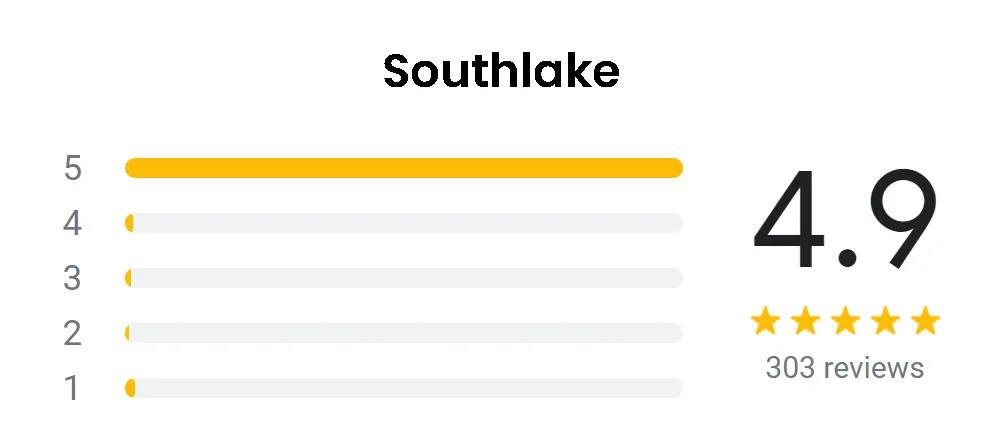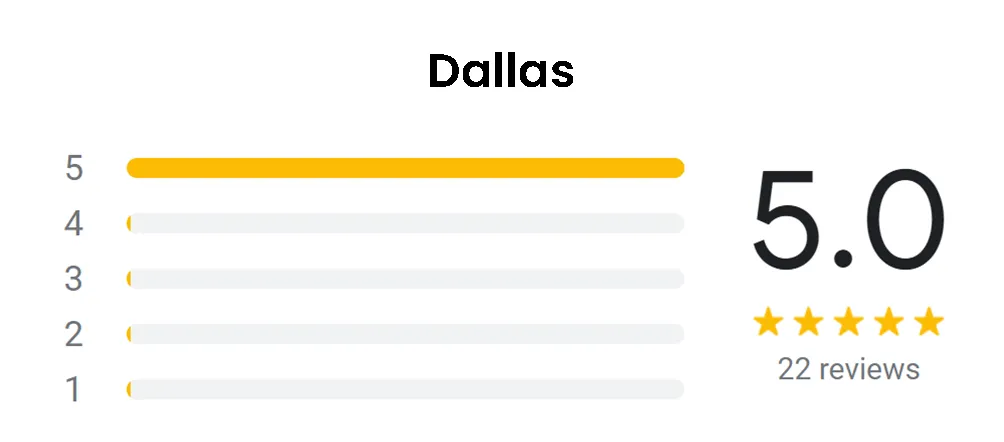
Skunks are known for their notorious spraying habits, and encountering one outside a window can be quite alarming. Depending on environmental factors, skunk spray releases a potent odor that can linger for hours and even days. This strong scent can penetrate homes and make it difficult to enjoy the fresh air.
It's essential to understand what to do if a skunk sprays nearby. Typically, it's best to stay indoors and allow the skunk to leave the area independently. Trying to confront or scare the skunk away may provoke it, leading to an unpleasant encounter.
Natural remedies and thorough cleaning can help mitigate the odor if it invades a living space. Knowing how to address the smell effectively is crucial for anyone with a skunk spray outside their window.

Skunks exhibit specific behaviors that can impact residential areas. Their digging habits and habitat preferences directly relate to their search for food and shelter.
Skunks dig for food, primarily insects, grubs, and roots. They are opportunistic feeders, which means they will explore yards where they detect potential food sources. A skunk digging in the yard often indicates an abundance of grubs or other insects, which are attractive food options.
Additionally, skunks may dig in gardens or lawns to uncover plant roots. A skunk living under the house may indicate it found a suitable shelter, often due to easy access gained through existing holes or spaces. Homeowners must know these digging patterns, as they can disturb lawns and landscaping.
Skunks typically prefer habitats that provide both food and shelter. They are often found in wooded areas, fields, and urban locations. A skunk near the house may be there due to easy food sources and potential shelter in spaces like crawl spaces or under decks.
Skunks are primarily nocturnal creatures, venturing at night to search for food. They create burrows under structures for protection and to raise their young. Understanding these preferences can help homeowners deter skunks from their properties by eliminating food sources and closing off access to potential hiding spots.

Recognizing the signs of skunk presence can help mitigate unpleasant encounters. Skunks tend to leave behind specific indicators that can alert individuals to their activity.
Several signs indicate skunk activity nearby. A strong, pungent odor is often the most noticeable, especially if a skunk has sprayed. This smell can permeate through open windows, making it likely someone might notice if a skunk is sprayed outside their window.
Additionally, look for tracks. Skunks have distinctive footprints with five toes and claws. Small holes in the ground may indicate digging for insects or grubs. Another sign is the presence of feces, which are tubular and often about the size of a small dog’s. Sightings during twilight hours can also be a clue, as skunks are primarily nocturnal creatures.
Skunks typically seek refuge in areas that provide shelter and food. Common locations include under decks and sheds, where they can find a safe resting place. If someone suspects a skunk under a deck, it is vital to approach it cautiously due to potential spraying.
Garages can also attract skunks, especially if food scraps or pet food are left unattended. Their presence near garbage cans is another indicator. Skunks are opportunistic feeders who may rummage through trash or compost heaps for food. Identifying these areas helps in taking measures to deter skunks effectively.
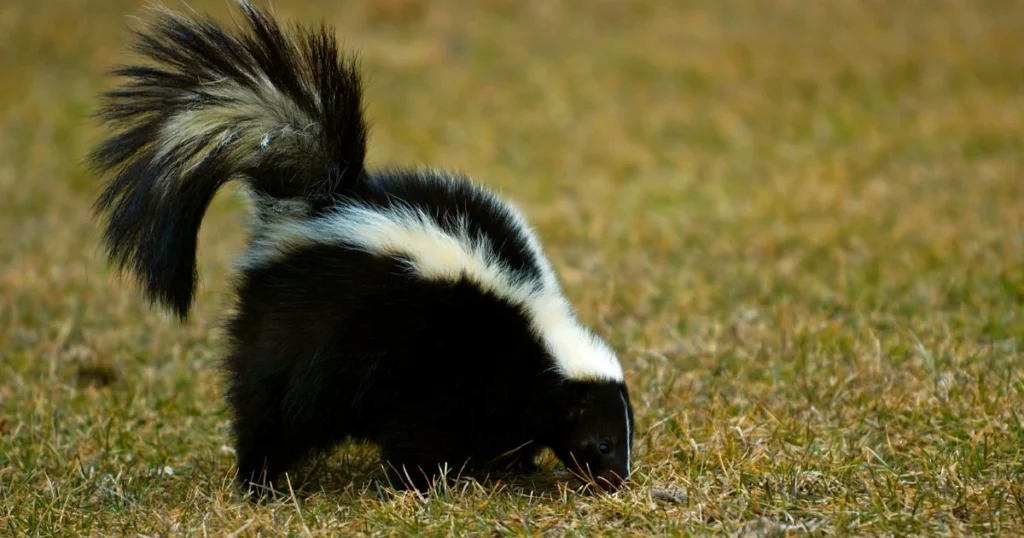
Specific strategies can be implemented to effectively prevent skunks from intruding around homes. These strategies focus on securing property and modifying landscaping to create unwelcoming environments for skunks.
Securing the home is vital in keeping skunks at bay. Sealing potential entry points is critical, especially around decks and basements. Skunks often seek shelter under decks or in basements, so checking for gaps or openings is essential.
Proper garbage management is equally important. Tight-fitting lids on trash cans should be used, and pet food should not be left outside overnight. Keeping the yard clean also deters skunks from looking for food sources.
Landscaping can significantly impact skunk prevention efforts. Creating an unwelcoming environment makes a property less appealing to skunks.
Additionally, individuals should monitor their lawns for signs of skunks digging up areas in search of grubs or insects. Applying beneficial nematodes can reduce insect populations, making the lawn less attractive to skunks.
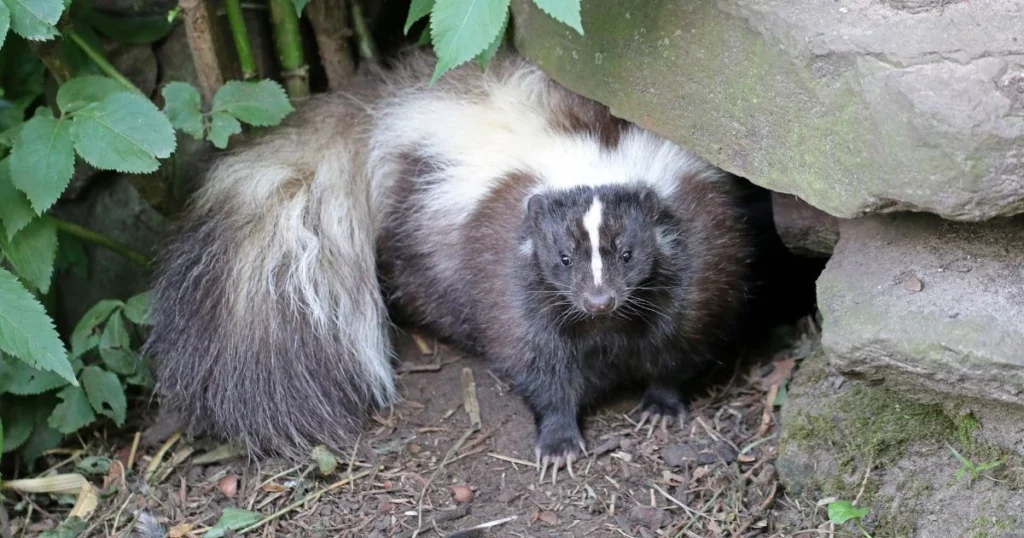
When skunks invade yards, they can cause two primary types of damage: harm to lawns and gardens and potential impacts on structures. Recognizing these damages is essential for effective remediation.
Skunks are known for digging up lawns. They search for food sources like grubs and insects. This behavior can lead to significant lawn damage, leaving unsightly holes and bare patches.
The extent of damage can vary. Minor infestations might have a limited aesthetic impact. In contrast, larger populations can devastate entire sections of a yard.
Garden areas are equally vulnerable. Skunks may uproot plants while foraging, leading to economic loss for gardeners. Understanding how skunks interact with the lawn will help implement proper measures to deter them.
While skunks primarily affect the outside environment, their presence can indirectly lead to structural damage. When skunks dig near foundations, they may destabilize the soil.
In urban areas, they might also nest or seek shelter under decks and porches, which can lead to a buildup of debris and potential hazards. Addressing any signs of skunk activity is imperative to prevent structural and health-related issues.
Taking immediate action is essential. Homeowners should inspect their properties for signs of damage caused by skunks and respond accordingly.
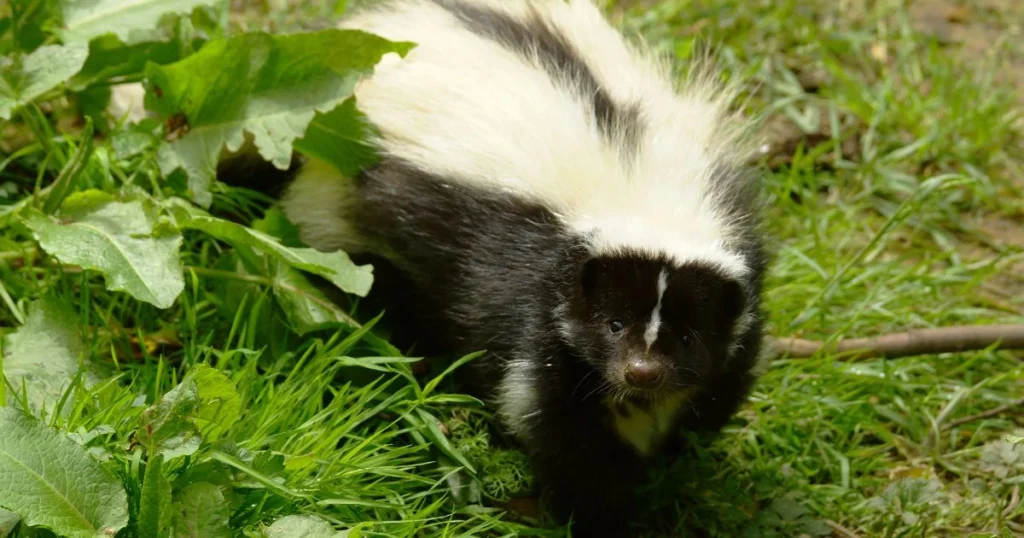
Skunk odor can be particularly persistent and unpleasant, especially near a home. Addressing the smell requires immediate actions to mitigate its effects, followed by long-term solutions for more thorough eradication.
When skunk spray is detected outside a window, quick action is essential. First, ventilate the area by opening windows and doors to allow fresh air to circulate. Regrettably, this odor can linger, so using fans can help dissipate the smell faster.
Next, a vinegar-water mixture combined with baking soda can be effective. Add a cup of vinegar and two tablespoons of baking soda for every quart of water. Spray this solution in affected areas to counteract the odor.
Ensure that pets do not come into contact with the sprayed area. If they have been affected, it is advisable to bathe them in specialized skunk odor removal shampoos.
Long-term strategies may be necessary for persistent skunk odor issues. Start by identifying the source of the skunk spray. Is it a specific area outside or entry points into the home? Addressing any vulnerabilities will reduce the chances of future sprays.
Consider using an enzyme-based cleaner for durable surfaces. These cleaners break down the compounds in the skunk spray, providing a more thorough solution.
Routine maintenance, such as trimming bushes near windows, can help deter skunks from approaching the area. Installing motion-activated lights may also discourage them from lingering nearby.
These steps can help maintain a more pleasant environment after a skunk incident.
Effective removal of skunks involves understanding humane methods and the professional services available. These approaches can help minimize stress for both the animal and the homeowner.
Humane eviction methods can be quite effective when dealing with a skunk under the deck or in a garage. Motion-activated lights and noise makers can startle skunks, encouraging them to leave. Placing odorous materials such as vinegar or ammonia around entry points can also deter them.
Creating a one-way exit can help allow skunks to leave but prevent their return. This method involves using a specially designed exclusion funnel. It is crucial to ensure that young skunks are not left behind in places like a basement.
Before employing these techniques, a homeowner should check local laws regarding wildlife removal. Using humane traps can be an option, but caution is necessary to avoid injuries.
Engaging professional removal services is advisable when skunks reside in hard-to-reach areas. Experts can safely assess the situation if a skunk lives under a deck or in a garage. These companies typically use humane traps and know how to relocate animals without harm.
Professionals are equipped to handle potential risks associated with skunk removal. They can identify signs of a skunk’s presence, such as distinct odors or tracks. Additionally, they will provide advice on preventing future infestations, including securing entry points and making the area less appealing to skunks.
Investing in professional services ensures compliance with local wildlife regulations, promoting both safety and ethical practices.
Addressing a skunk sprayed outside a window involves understanding various legal regulations. Specific laws govern wildlife protection and the handling of nuisance animals. Knowing the potential liabilities and legal obligations involved is crucial.
Wildlife protection laws vary by region but offer safeguards for species like skunks. These laws may prohibit the relocation or harming of skunks, especially those living under a house. Local regulations can dictate how to handle wildlife encounters without infringing these laws.
Individuals should consult their local wildlife agency to learn the necessary permits or legal guidelines. Ignoring these laws can lead to fines or legal action. Proceeding carefully to avoid penalties while addressing a skunk problem is essential.
Engaging licensed professionals for skunk removal is advisable, particularly if the skunks live in a house. These experts know the legalities of wildlife removal and can navigate any associated regulations. They understand the proper techniques to handle skunks safely and humanely.
When hiring professionals, ask for proof of licensure and adherence to local wildlife laws. This ensures the chosen service complies with regulations designed to protect animals and property owners. Properly licensed services can also prevent accidental harm to wildlife and minimize liability for property owners.
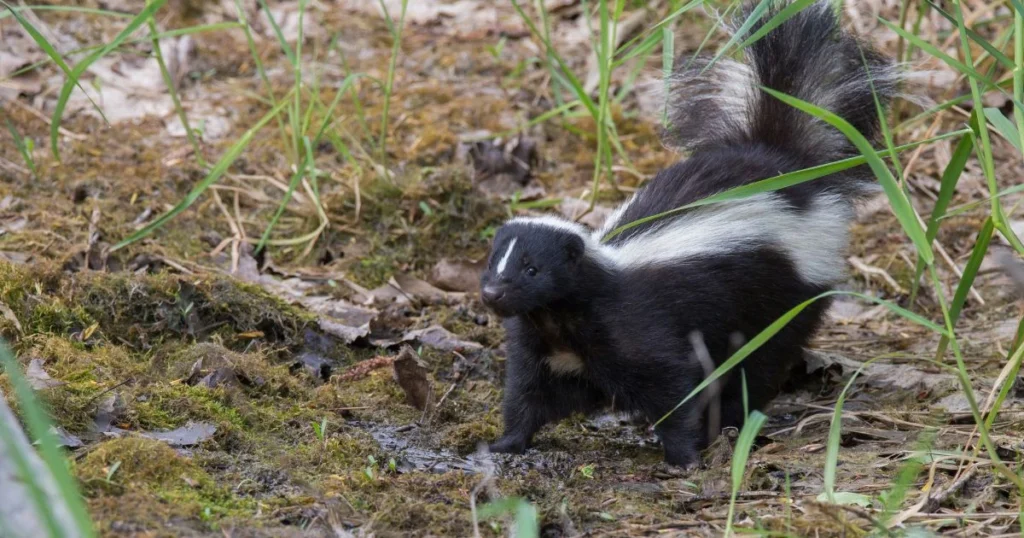
Restoration after skunk activity involves addressing both lawn damage and necessary house repairs. Effective measures can greatly improve the affected areas and mitigate future incidents.
Skunks can cause significant damage to lawns by digging for insects or grubs. This damage typically appears as small holes or areas where the grass has been uprooted.
To restore the lawn, assess the extent of the damage. Then, reseed affected areas using high-quality lawn seed that matches the existing grass.
Water the reseeded areas regularly to keep the soil moist until the new grass is established. For garden damage, inspect plants for any disturbances and replant as necessary.
In addition to lawn restoration, checking for potential damage near the house may be essential. Skunks can sometimes burrow or disturb areas close to foundations.
Inspect for:
Repairing any physical damage quickly will help maintain the integrity of the property. For extensive issues or ongoing wildlife concerns, contacting a professional might be the best action.
To address wildlife problems effectively, considering help from Critter Stop is advisable. They have a fantastic reputation and online customer reviews because they provide high-quality work and great customer service. Call Critter Stop at (214) 234-2616 for a free inspection.
This section addresses common inquiries regarding skunks and their impact on properties. It offers practical advice on managing encounters, preventing damage, and safely dealing with skunks.
If a skunk is sprayed outside, he should ventilate the area by opening windows and doors. Hydrogen peroxide, baking soda, and dish soap can neutralize the odor. Apply this solution to affected surfaces with care.
He can place fencing around affected areas or use motion-activated sprinklers to deter skunks. Keeping food sources such as pet food and garbage secure is also essential in minimizing their presence.
He should consider using a humane trap or enlisting professional wildlife removal services. Ensuring food sources are removed will encourage the skunk to leave independently.
After the digging has stopped, he can reseed and fertilize the damaged areas. Regular watering will help the new grass establish effectively.
Securing garbage and pet food can eliminate food sources. He might also consider using repellents or physical barriers to discourage skunks from returning.
Signs include small holes or diggings in the lawn, primarily in patches. Addressing damage involves reseeding and ensuring skunks are not attracted by food sources.
Humane traps can be set up to relocate the skunk safely. Removing attractants around the property will encourage the skunk to leave.
He should ensure all doors are open to provide an escape route. He can gently encourage the skunk to leave using noise or lights without causing panic if possible.
Using a humane trap is a viable option. Additionally, he can create a barrier or remove food sources so that the skunk has no reason to remain.
He can open windows and doors to create an exit path. A gentle noise or light source can also encourage the skunk to leave safely.
It is advisable to utilize humane traps for safe removal. Additionally, he must ensure that no food sources are available to discourage the skunk from returning.
Skunks often dig for insects or grubs in the soil. He should treat the lawn to reduce insect populations and secure food sources to prevent this.
Avoid approaching the skunk and ensure doors and windows are closed. Securing food and using repellents can help keep skunks away.
Effective prevention strategies include fencing and securing food sources. Regular yard maintenance and repellents can also dissuade skunks from approaching.
Visit our Critter Library and learn more about our furry friends
